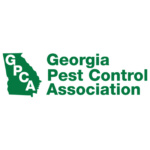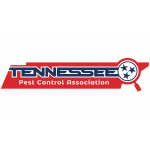Stink Bug Prevention Tips to Keep Your Home Bug-Free
Stink bugs may be small, but they can quickly become a frustrating nuisance in your home and garden. These shield-shaped insects, notorious for their pungent odor when disturbed, often seek shelter indoors as temperatures drop. Whether you’ve encountered them as unwelcome houseguests or garden invaders, preventing stink bugs before they become a problem is far easier than dealing with an infestation.
This guide is packed with effective stink bug prevention tips to help you protect your home and yard. We’ll cover everything from sealing cracks to using natural repellents, so you can enjoy a stink bug-free environment.
Understanding Stink Bugs
Before jumping into prevention methods, it’s helpful to understand a bit about stink bugs. These insects, scientifically known as the Halyomorpha halys, are commonly referred to as “brown marmorated stink bugs.” Native to Asia, they have spread to parts of North America and Europe over recent years, often hitchhiking on crops or other goods.
Their defining trait? The unpleasant odor they release as a defense mechanism. Stink bugs are more than just a smelly inconvenience; they can cause damage to gardens, feeding on fruits, vegetables, and ornamental plants, leaving them scarred and unappealing.
When indoors, stink bugs enter a dormant state but remain a frustrating source of panic for homeowners, especially during the colder months. Knowing their habits and lifecycle is key to outsmarting them.
How to Prevent Stink Bugs from Invading Your Home
1. Seal Up Entry Points
Stink bugs love to sneak inside through even the smallest cracks and gaps. Start your prevention strategy by sealing off any potential entry points.
- Inspect Doors and Windows: Look for gaps or cracks around windows, doors, and doorframes. Install weather stripping if necessary and repair or replace torn screens to keep bugs out.
- Seal Cracks and Crevices: Use caulk to fill in gaps in your walls, foundation, and attic. Pay close attention to areas where utilities and pipes enter your home.
- Install Door Sweeps: Attach door sweeps to the bottom of any exterior doors to close off one of their favorite entryways.
2. Block Vent Access
Stink bugs tend to find their way through vents, especially into attics and basements. Installing screens on vents effectively prevents bugs from getting in while still allowing for proper airflow.
- Chimneys: Place a fine mesh over your chimney to block bug entry without affecting ventilation.
- Exhaust Fans: Cover any exhaust or attic fans with mesh or screens you can secure tightly.
3. Keep Outdoor Lighting to a Minimum
Stink bugs, like many other pests, are drawn to light. Outdoor lighting can act as a beacon, attracting bugs to your home.
- Switch to Yellow Lights: Use yellow or sodium vapor lightbulbs, which are less attractive to stink bugs.
- Turn Off Unnecessary Lights: Reduce outdoor lighting at night whenever possible. Motion-detected lights are a great alternative.
4. Maintain Your Yard
A well-maintained yard can significantly reduce stink bug populations near your property. Since stink bugs often hide in vegetation, keeping things tidy can keep them at bay.
- Trim Plants: Keep shrubs, bushes, and trees well-pruned, particularly near your home’s foundation.
- Remove Standing Debris: Clear away any piles of leaves, wood, or debris near your house where stink bugs might hide.
- Use Mulch Sparingly: Too much mulch close to your home can attract stink bugs and other pests. Keep mulch layers thin and well-spread.
5. Use Natural Repellents
Sometimes, tapping into nature’s solutions can spare you from harsh chemicals. Natural repellents are effective options if you want to discourage stink bugs from hanging around.
- Essential Oils: Stink bugs dislike the smell of essential oils like mint, lavender, or clove. Mix a few drops with water to create a spray for windowsills, doorframes, and other entry points.
- Garlic Spray: Create a homemade garlic spray by mixing water and minced garlic. Spray the mixture around entry points to deter stink bugs.
- Plant Stink-Bug-Repellent Plants: If you’re battling stink bugs in your garden, consider growing plants like marigolds or chrysanthemums, which are known to repel pests naturally.
Additional Tips for Managing Stink Bugs Indoors
Despite your best efforts, some stink bugs may still find a way inside your home. Follow these tips to safely deal with them:
1. Don’t Squash Them!
The last thing you want to do is squash a stink bug indoors, as this will release its infamous odor. Instead, gently capture the bug using tissue or a cup and release it outside, or use a vacuum cleaner to suck them up. Be sure to dispose of the vacuum bag quickly if you use this method.
2. Create a DIY Stink Bug Trap
You can make an effective stink bug trap at home with items you probably already have. Fill a pan with soapy water and place it beneath a light source. Stink bugs are attracted to the light and will fall into the soapy water, which prevents them from escaping.
3. Keep Your Home Dry
Stink bugs are attracted to moisture, so ensure areas prone to dampness, like basements or bathrooms, are well-ventilated. Consider using a dehumidifier to keep humidity levels low.
When to Call a Professional Exterminator
Sometimes, no matter how hard you try, a stink bug infestation can get out of hand. If you’re dealing with a severe stink bug problem, it may be time to call in a professional pest control service. Exterminators can provide long-term solutions and eliminate stink bugs with safe, effective methods.
Embrace a Stink-Bug-Free Environment
With these stink bug prevention tips, you can protect your home from unwelcome smelly intruders while safeguarding your garden from potential damage. By taking proactive steps, you can enjoy a bug-free environment all year round.
Remember, prevention is always easier than finding a cure, so start implementing these stink bug deterrent methods today. And if you’re ready to tackle other household pests, check out our other pest prevention guides to keep your home a safe and comfortable place for you and your family.






